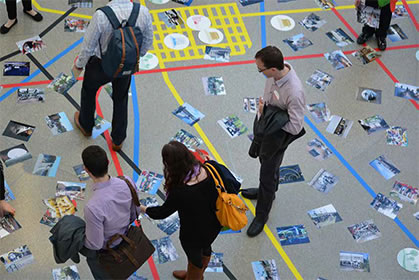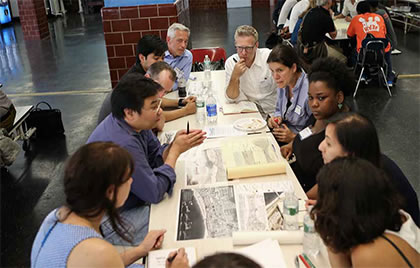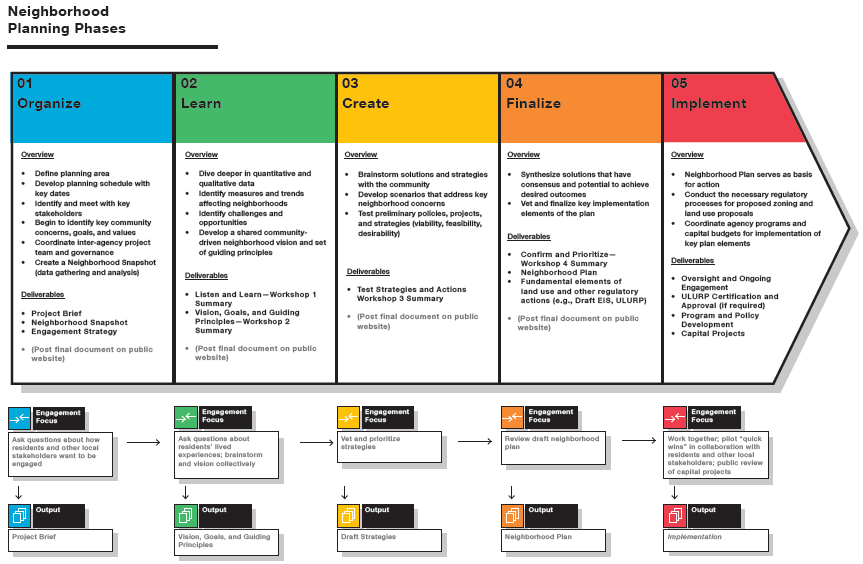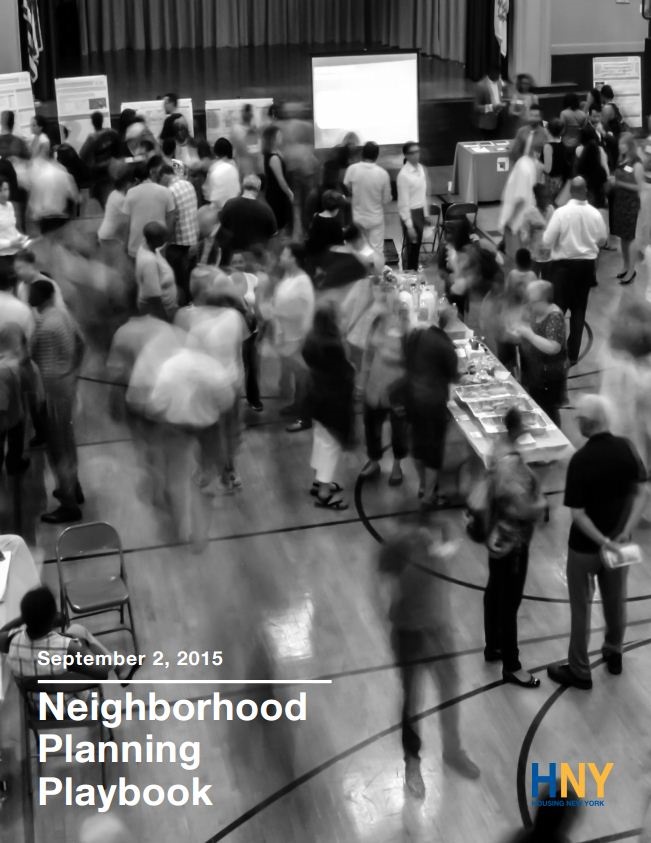
 Housing Preservation & Development311
Housing Preservation & Development311 Search all NYC.gov websites
Search all NYC.gov websites
NYC Neighborhood Planning Playbook
NYC Neighborhood Planning Playbook
What: A Neighborhood Planning Process
In 2014, Mayor Bill de Blasio created a landmark mandate Housing New York: A Ten-Year, Five-Borough Plan. At the core of the Plan are strategies to create affordable, livable, and healthy neighborhoods focused on housing, economic development, and community resources. A vision was set in motion for how all neighborhoods contribute to creating a just, equitable, inclusive, and prosperous city.
Housing New York (HNY) set forth two fundamental objectives:
- Finance the preservation and development of 200,000 affordable housing units over the next 10 years.
- Engage communities in comprehensive planning with the aim of stabilizing and strengthening neighborhoods to ensure they are diverse and livable.
This people-oriented approach seeks to transform the role that NYC government has traditionally played in neighborhood planning by fostering a more open and inclusive process for communities. At the same time, the meaningful engagement of communities will require unprecedented levels of collaboration between government agencies, elected officials, community organizations, and everyday New Yorkers.
Why: Project Goals

Communities are central to developing solutions for the future of their neighborhoods. In understanding the goals, concerns, aspirations, values, priorities, and vision for a neighborhood, as articulated by the community, the City can more effectively engage with people to refine existing and/or develop new tools to meet community objectives.
To effectively facilitate processes to meet this transformational and exciting mandate, the City enlisted GOODcorps and Gehl Studio—firms that work at the intersection of human-centered design, community engagement, and change management—to develop a Neighborhood Planning Playbook.
The goal of the project was to develop a set of tools that would enable city agencies to more effectively partner with communities to plan for the future. It is a project management tool with three core elements:
- Planning Process. A clearly articulated neighborhood planning process and tools to effectively engage the community in the process. The HNY Neighborhood Planning Process is a problem-solving approach to create consensus-built solutions.
- Neighborhood Analysis. Methodologies for problem solving based on quantitative data, as well as a qualitative understanding of the lived experiences in neighborhoods.
- Transparency. Making this set of tools broadly available adds clarity and efficiency for staff, as well as transparency and predictability for community members.
Who: The Planning Team

Numerous City agencies were involved in workshops and interviews to develop the Playbook, and a number of community development organizations also advised on certain elements. City staff dedicated time, experience, and professional skills, and they recognized the need for a planning framework in which various other capital and operational agencies would also need to participate to ensure that decisions are feasible and implementable. These are the core agencies involved in the City’s neighborhood planning efforts, and which collaborated in developing the Playbook.
- Department of City Planning (DCP)
- Department of Housing Preservation and Development (HPD)
- Department of Small Business Services (SBS)
- Economic Development Corporation (NYCEDC)
- Office of the Mayor
- Intergovernmental Affairs
- Community Affairs Unit
- Office of Deputy Mayor Glen
How: Steps to Building a Neighborhood Plan

The Playbook lays out a transparent, predictable, and clear process for how communities and agencies can work together to address the complex set of issues and tradeoffs that neighborhood planning involves in New York City, including land use, housing, jobs and businesses, and community resources.
The five-phased planning process is based on a common problem-solving methodology used by designers, planners, and managers to identify problems and create informed solutions. The Playbook tailors this standard practice to neighborhood planning in NYC.


